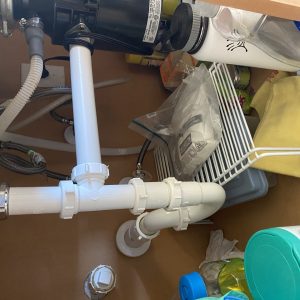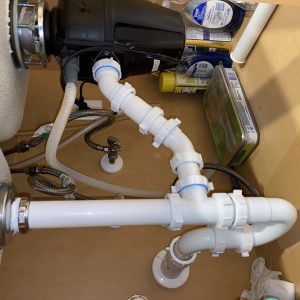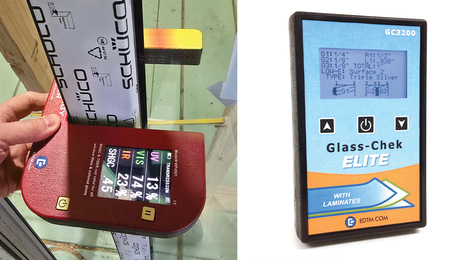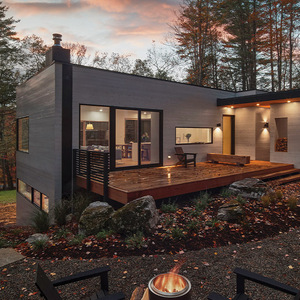Tried something new with a garbage disposal *be kind but would like honest feedback*
My garbage disposal burned out so I picked up a Moen 3/4hp to replace it. Not only was my old disposal not working but even when it was working it was flooding the half sink and when I ran the dishwasher the sink was overflowing. I’ve researched a lot how to setup/install garbage disposals and they have a straight pipe to the main sink pipe into the trap. When I took the disposal out to replace it I got a chance to look at all the slip joint piping. The horizontal pipe was literally clogged, you could barely see through it. I’m not sure if it’s user error but to me it looked like that because of the design the matter wasn’t getting pushed through the pipe and was just building up and being stagnant. So I had some free time and I wanted to try something that would allow gravity to help. I setup my new disposal by cutting slip joint pvc pipes so that from the disposal to the trap there was a 45 degree slope. My thought process was it would allow water and particulate to flow easier out of the system. I’m no professional, I just like to tinker and try new things and see if they work or not. In my head it made sense. I tried researching online but found nothing like what I put together which had me slightly concerned. I’m still going to use it and see how it works. Every other month I’m going to take out piping and see if there is less buildup versus the straight pipe, even if it had a very shallow angle like 5 degrees. I’ve attached pictures, don’t mind my handy work it’s nothing special. It was tough getting all the pieces together with the available parts from Home Depot and trying to connect the the pre-existing line coming in from the wall. Thank god for miter saws, it made it a lot easier. Pictures are provided below. I used two different dopes, t plus 2 for the main drain and tru-blue for the 45 degree angle pipes leading into the disposal for vibrations? Thanks for any help and insight!





















Replies
Typically a disposer discharges through a 90 deg elbow that faces down. These come with the disposer.
I definitely did notice that, welll I will see how it goes, worse comes to worse and it performs really poorly I can just undo everything up to the trap and refit with a couple pipes. Learn something new every day!
I didn't mean to suggest that there's anything wrong with what you did. It looks odd but should work fine.
in general, drain lines that have too much slope allow solids to gather and not be washed away. this is why horizontal runs need to run downhill, but not too much.
I suspect too much stuff going down the disposer, and not enough water.
good luck with your experiment.
Thanks for the advice, sorry I’m by no means a pro or well informed in this stuff haha. I’m learning everyone has to start somewhere. It gave me a ton of practice piecing together an odd system. I think if this doesn’t work ill go with the suggested 90 degree straight pipe down and then ru. An extension, put a right angle or flex angle and run a straight pipe with a very shallow slope to the trap. Thanks for the input!
There are two schools of thought on maximum slopes for drains. Code is ambiguous in that it speaks of combination waste and vent lines. But for those concerned with too much slope. 1/2 inch per foot is the maximum for horizontal lines. But anything over 45 degrees is considered vertical and is OK.
This journeyman carpenter would have hooked it up like the old one after reaming out that drain line.
As long as you can take it apart and keep an eye on it, and it doesn't leak, what harm can it do. But it may be that Uncle Mike has a point. It could be that the lower slope acts as a bit of back pressure to allow the disposal a bit more time to do it's job and reduce the waste to smaller pieces that would move in the pipe more easily. In other words, the next plug might be further downstream, in the trap.
To tell the truth I'd never install a sink disposal. It is convenient for people who don't know what to do with food waste, but it creates a big load for septic systems.